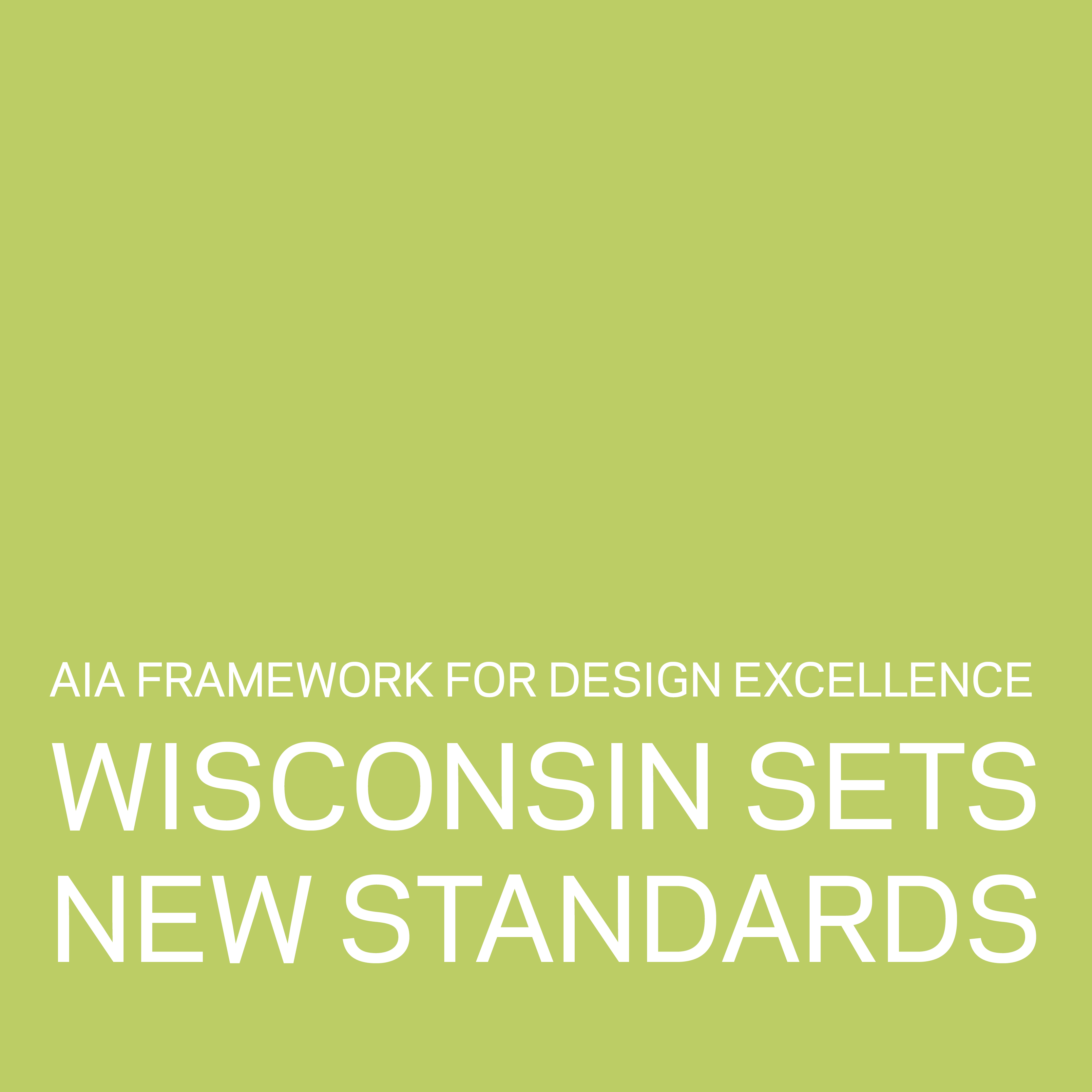OPN helps State of Wisconsin set new sustainability standards for capital projects

It’s not a coincidence that the State of Wisconsin and city of Madison are setting the example for municipalities and states who are committed to addressing risks to our communities’ health, safety and welfare through building projects and programs.
At OPN, we’ve found our civic clients are primed to integrate the AIA’s Framework for Design Excellence , which defines 10 principles of good design with the goal of a zero-carbon, equitable, resilient, and healthy built environment, into their design process for three reasons:
- Many have already implemented energy efficiency or stormwater measures.
- As owner-operators, they see buildings as long-term investments.
- They must engage a large, diverse user group so the project reflects the values of their community.
By addressing these attributes, all of which are components of the Framework for Design Excellence, in the design process, a significant measure of resilience is built into a project.
In Madison, two OPN-designed city projects — Pinney Public Library and a Fire Station 14 — both had tight budgets and short timeframes as well as meaningful sustainability goals. The framework, which is now applied to every project, helped develop a holistic vision and set a new standard at the city.
The success of these projects and others caught the attention of facilities managers at the University of Wisconsin-Madison and the State of Wisconsin, who asked OPN’s Sustainability Director Tate Walker, AIA, LEED Fellow, WELL AP, to lead the development of the recently released DFDM Sustainability Guidelines for Capital Projects . The guidelines address Wisconsin Governor Evers Executive Order #38 which seeks to reduce Greenhouse Gas Emissions in the State of Wisconsin. The building sector is responsible for roughly 40% of global CO2 emissions (Source: 2018 Global ABC Report, IEA), and these guidelines represent Wisconsin’s commitment to making a positive impact.
Developed with the help of a group of designers led by Walker, the guidelines are based on the Framework for Design Excellence , which Walker also helped author. The project team used it as an outline to define specific measures that projects in Wisconsin must incorporate to address the opportunities and risks that are unique to the state and its communities.
Several aspects of the framework, which is intended to be accessible and relevant for every project, regardless of size, typology, or aspiration, made it a good candidate for anchoring Wisconsin’s guidelines.
- It takes a holistic, broad-based approach to design that covers the spectrum of criteria from the ecology of a place to the economic drivers of a project and everything in between.
- It is a simple, powerful tool that is accessible to a general audience – which is important for soliciting feedback and building consensus.
- It is free and open source – all of the research that underpins its best practices comes attached.
- It is relevant; sharing practical ways to build stronger, more resilient communities and institutions despite the challenges we currently face.
- It is flexible, helping to provide an open-ended vision so that the client can define their unique goals that are meaningful and measurable to them.
All change happens locally. As architects we have a tremendous amount of responsibility to make these policies work where we live. It starts by asking the right questions.
